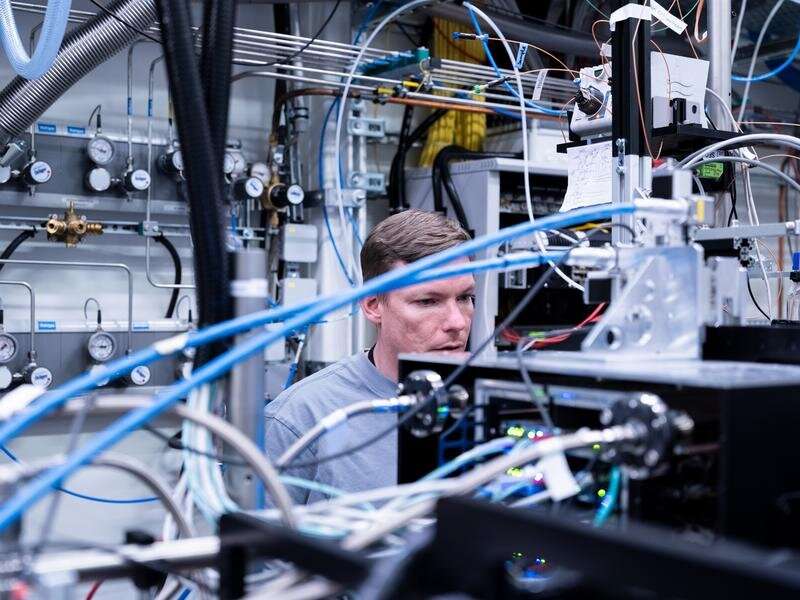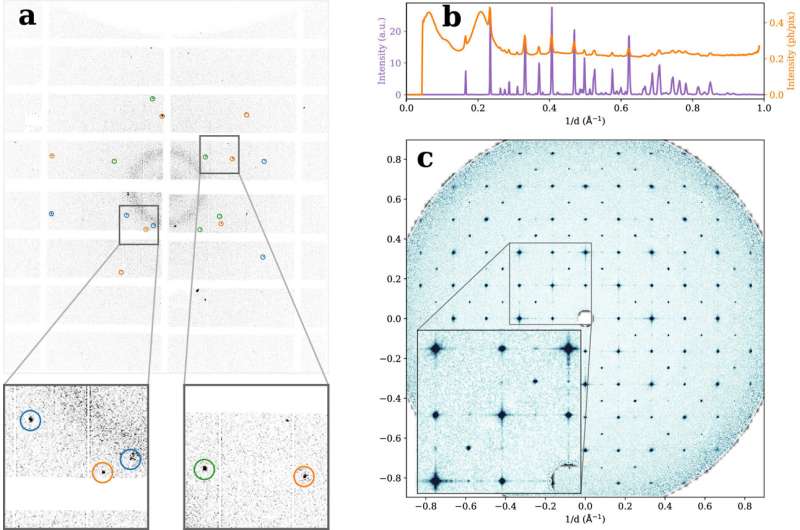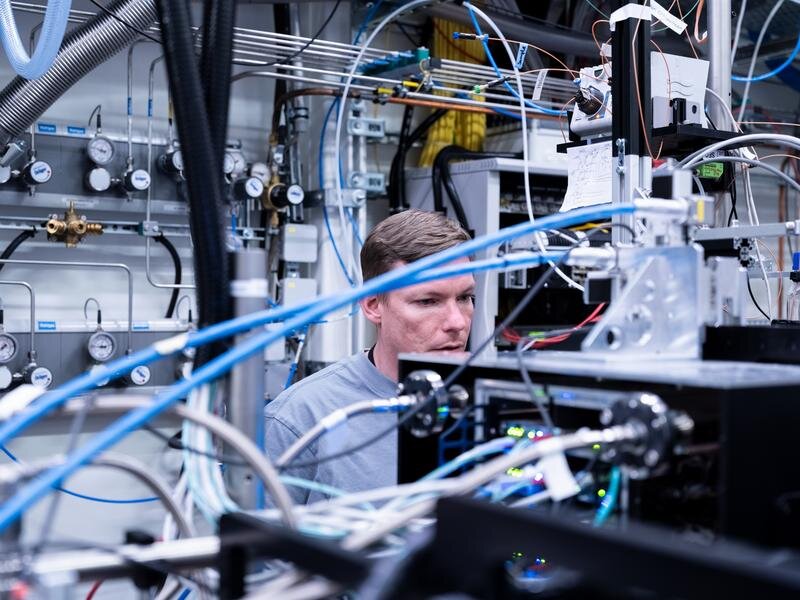
Johan Bielecki at the “Single Particles Biomolecules and Clusters/Serial Femtosecond Crystallography” (SPB/SFX) instrument of European XFEL, where the experiment was carried out. Credit: European XFEL
When light hits solar cells, so-called electron-hole pairs are created: the electrons are excited and can move almost freely in the material—i.e. to generate electricity. The electrons will leave ‘positive gaps,” so-called holes, in the semiconductor material. They can also move through the material. Both electrons and holes carry an electrical charge. They deform the surrounding atomic lattice on their way through the material slightly.
An international research team at European XFEL has now been able to directly observe this very weak effect for the first time. “With the help of extremely fast flashes from European XFEL’s X-ray laser, we were able to visualize this barely noticeable change,” explains Johan Bielecki, scientist at the Single Particles Biomolecules and Clusters/Serial Femtosecond Crystallography (SPB/SFX) instrument at European XFEL, where the experiment was carried out. According to the researchers, this could be an important step in the development of new materials for solar cells or light-emitting diodes, for example.
The research is published in the journal ACS Nano.
A so-called quantum dot of cesium, lead and bromine (CsPbBr3) studied by the scientists was only a few millionths of a millimeter in size. A quantum dot is a tiny object whose properties can no longer be described classically, but only with the help of quantum physics.
When light hits this quantum dot, electron-hole pairs are created. Due to their electrical charge, both the electron and the hole pull on the atoms in the crystal—as if two people were tugging on a net and deforming it. In this way, the pair of particles creates a kind of ‘dent’ in the crystal. In physics, this state is called an exciton-polaron.

Diffraction data and reconstruction. Credit: ACS Nano (2025). DOI: 10.1021/acsnano.5c06716
The lattice deformation only affects a few atoms—but it is decisive for the optical and electronic properties of the material. “The better we understand the deformation, the better we can try to develop improved materials, for example, more efficient displays or more powerful sensors,” says Zhou Shen from the Max Planck Institute for the Structure and Dynamics of Matter and lead author of the study.
A particularly precise method is required to detect the lattice deformation at all. The researchers used the European XFEL in Schenefeld near Hamburg—the largest X-ray laser in the world. It emits extremely short and intense X-ray flashes. It enables images to be captured within femtoseconds—in other words, within a quadrillionth of a second. “It’s like observing the movement of atoms with a high-speed camera,” says Bielecki.
Paving the way for new technology
The direct observation of this effect helps to understand how light and matter influence each other at the tiniest level. This is crucial for many future technologies: from highly sensitive light detectors and new displays to components for quantum computers.
“What we show here is a first step towards specifically controlling such effects,” says Shen. “This could enable us to develop even more powerful and energy-saving optoelectronic components in the future.”
More information:
Zhou Shen et al, Direct Observation of the Exciton-Polaron in Single CsPbBr3 Quantum Dots, ACS Nano (2025). DOI: 10.1021/acsnano.5c06716
Provided by
European XFEL
Citation:
X-ray flashes reveal how electron-hole pairs tug at atoms inside quantum dots (2025, August 18)
retrieved 18 August 2025
from https://phys.org/news/2025-08-ray-reveal-electron-hole-pairs.html
This document is subject to copyright. Apart from any fair dealing for the purpose of private study or research, no
part may be reproduced without the written permission. The content is provided for information purposes only.
